Endeavor Research Private Ltd successfully hosted the Webinar on Chemistry during March 15-16, 2021. The webinar was successful in gathering 34 eminent speakers from various reputed organizations and their paramount talks enlightened the gathering.
The pragmatic meet organized by Endeavor Research Private Ltd received generous response from Industrialists, Academia, Talented Researchers and Young Student Community. Industrialists, Researchers and Students who attended from different parts of the world made the webinar one of the most successful events from the Endeavor.
The scientific program paves a way to gather visionaries through the research talks and presentations and put forward many thought provoking strategies.
Scientific sessions covered in the webinar i.e. Physical Chemistry | Catalysis | Chemistry for sustainability | Organic & Inorganic Chemistry | Chemical, Biomedical, and Biological engineering | Biochemistry and Medicinal Chemistry | Electrochemistry, Electrolysis and Corrosion | Material Chemistry and Functional Materials | Theoretical and Computational Chemistry | Environmental and Green Chemistry | Polymer Chemistry | Nano Chemistry | Energy Chemistry & Engineering.
The webinar was marked with the presence of renowned Speakers, Young Researchers, Students and Business Delegates driving the two day event into the path of success with thought provoking keynote and oral presentations.
Speaker
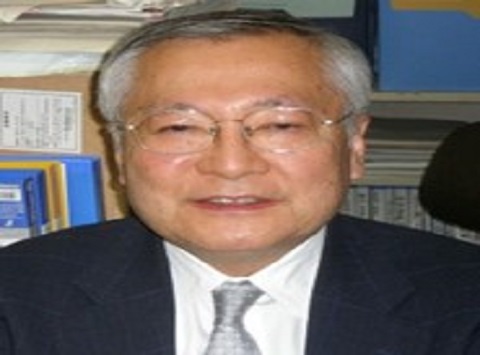
Akira Naito
Yokohama National University, Japan
Dr. Akira Naito serves as a professor emeritus with Yokohama National University, where he previously excelled as a professor from 2001 to 2015. Additionally, he channels years of expertise into his work as the director of the Instrumental Analysis Center at the aforementioned university. He has provided his research to a plethora of articles published in the fields of “Structurer determination of photoreceptor membrane proteins by solid-state NMR”, “Dynamic membrane interaction of anitimicrbial peptides and membrane proteins”, “Characterization of the amyloid fibril formation of hCT and glucagon” and “Developments of new solid-state NMR methods”.
Microwave heating is widely used to accelerate organic synthesis reaction. However, role of non-thermal microwave effect on the chemical reaction has not yet been well characterized. The microwave heating processes of an ethanol-hexane mixed solution [1] and N-(4-methoxybenzyliden)-4-butylaniline (MBBA) in liquid crystalline and isotropic phases [2] were investigated using in situ microwave irradiation NMR spectroscopy [3] and MD simulation. The temperature of the solution under microwave irradiation was estimated from the temperature dependence of the 1H chemical shift (chemical shift calibrated (CSC)-temperature). The CSC-temperature of CH2 and CH3 protons reflect bulk temperature of solution by thermal microwave effect. The lower CSC-temperature of the OH proton in ethanol can be attributed to a non-thermal microwave effect. Microwave induced ordered molecules interact each other to form hydrogen bonds and accelerate chemical reaction rate as non-thermal microwave effect.
[1] Y. Tasei, B. Mijiddorj, T. Fujito, I. Kawamura, K. Ueda, A. Naito. J. Phys. Chem. B.2020, 123, 9615-9624.
[2] Y. Tasei, F. Tanigawa, I. Kawamura, T. Fujito, M. Sato, A. Naito. Phys. Chem. Chem. Phys. 2015, 17, 9082-9089.
[3] Y. Tasei, T. Yamakami, I. Kawamura, T. Fujito, K. Ushida, M. Sato, A. Naito. J. Magn. Reson. 2015, 254, 27-34.
Speaker
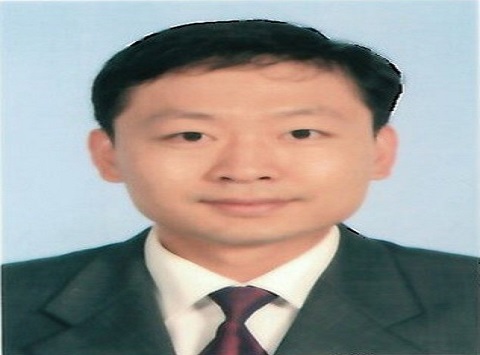
Peng Zhang
PetroChina Petrochemical Research Institute, China
Dr. Peng Zhang (1980) obtained his Ph.D. from the China University of Petroleum. He has engaged in dehydrogenation & reforming catalysts and processes of petrochemicals for more than 15 years. Dr. Zhang innovatively discovered high-performance zeolite-type environmentally friendly reforming catalysts, which can avoid chlorine loss and equipment corrosion of traditional commercial alumina-type catalysts. He is a senior engineer and inventor on more than 30 patents. Dr. Zhang has the honorary title of Science and Technology Young Talent of PetroChina Petrochemical Research Institute.
To solve the problems of the halogen loss and corrosion caused by the conventional alumina-type catalytic reforming catalyst impregnated with about 1 w% Cl, a series of novel environmentally friendly modified Zeolite Y catalysts supported with 0.3 w% Pt without any corrosive halogen were obtained by the ion exchange of Mg2+, Ba2+ or Ce3+ and then by the impregnation of Pt(NH3)4(NO3)2 solution. Characterizations of the prepared zeolites and catalysts were performed using XRD, SEM, TEM, N2 adsorption-desorption, NH3-TPD, UV-Vis DRS and Laser Raman. Catalytic aromatization performance was investigated in a continuous-flow fixed-bed evaluation unit using hydrofining naphtha feedstock with sulfur of 0.50 μg/mL. Results of the characterizations showed that Pt grains on the catalysts were distributed in nano state. The evaluation showed that ion exchange obviously increased aromatization activity of all the catalysts. The aromatization performance of Ce3+ modified catalyst Pt/CeY was the best, which had a reasonable selectivity and a higher activity than commercial alumina-type reforming catalyst.
Speaker

Lihan Zhu
Northeast Normal University - China
Lihan Zhu obtained her BSc (Chemistry) from Liaoning University and she is studying as a Ph.D. student in the Northeast Normal University. She used to study at the National University of Singapore as a joint Ph.D. student. Her main interest is to disclose the mechanisms of organic reactions and the origin of enantioselectivity for asymmetric reactions by computational methods.
The acidity of the chiral Brønsted acid catalysts is crucial for the catalytic efficiency, the highly acidic BINOL-derived chiral N-triflylphosphoramides can provide effective asymmetric catalysis for rearrangement reactions. Despite multiple interactions between the basic/acidic sites of the functional group and the substrates have been evaluated, the origin of high catalytic activity and excellent enantioselelctivity of N-triflylphosphoramides catalyst is still challenging. Especially the role of CF3 groups in controlling activation mode and determining enantioselectivity. Thus, two effective case reactions of pinacol and acyloin rearrangement catalyzed by BINOL N-triflyphosphoramide were employed to provide basis understanding for these issues. Our calculations reveal that the P(=NTf)OH tautomer of N-triflyphosphoramide is an active catalyst form for the rearrangement reaction, differing from previous proposed model involving P(=O)NHTf group. This can be ascribed to the additional C−F···π interaction between the CF3 group of catalyst and the migration group of substrate in the preferred activation model.
Furthermore, we found that the CF3 substituent on the central functional group effectively aids the bifunctional activation and improves catalytic activity of N-triflyphosphoramide catalyst. More importantly, the CF3 substituent and the orientation of migration groups play a significant role in controlling the enantioselectivity by contributing different strength multiple C–H···F, C–F···π, and C–H···πinteractions between catalyst and substrate. Overall, our findings on the factors affecting the stereochemical control may show utility for other challenging asymmetric reactions catalyzed by chiral Ntriflylphosphoramides.
Keynote

Zlatko Janeba
Institute of Organic Chemistry and Biochemistry, Czech Republic
Dr. Zlatko Janeba earned his Ph.D. in 2001 in Organic chemistry from the Institute of Organic Chemistry and Biochemistry (IOCB) in Prague, the Czech Academy of Sciences. He underwent postdoctoral research training in the groups of Prof. Morris J. Robins at Brigham Young University and Prof. Paul F. Torrance at Northern Arizona University. He spent 3 years (02/2005 – 02/2008) as a senior scientist at Moravek Biochemicals, Inc. in California, one of the leading companies in the field of custom synthesis of radiolabeled compounds for pharmaceutical research. In 2008, he rejoined the research team of Prof. Antonín Holý at IOCB and in March 2010 he established his Junior Research Group within IOCB. Since January 2016, he is the head of the Senior Research Group at IOCB. Current research of the group involves design, synthesis and SAR studies of modified nucleosides and nucleotides, as well as other heterocyclic compounds, with a wide range of biological properties, especially antiviral, anticancer, antibacterial, antiparasitic, and anti-inflammatory. He is a member of International Society for Antiviral Research (ISAR); International Society of Nucleosides, Nucleotides and Nucleic Acids (IS3NA); and International Society of Heterocyclic Chemistry (ISHC).
He received the Petr Sedmera prize in 2016. Currently, Dr. Janeba serves as an associate editor of Antiviral Chemistry & Chemotherapy and is a member of International Advisory Board of ChemMedChem. He has authored some 100 publications in internationally recognized scientific journals and he gave numerous invited talks worldwide.
Anti-inflammatory drugs are among the most used therapeutic agents worldwide, but traditional non-steroidal anti-inflammatory drugs (tNSAIDs, non-selective COX enzymes inhibitors) as well as coxibs (highly selective COX-2 inhibitors) suffer from serious side effects. Thus, potent inhibitors of inducible microsomal PGE2 synthase-1 (mPGES-1) may be good candidates for development of anti-inflammatory drugs based on a novel mechanism of action. We have carried out an extensive structure-activity relationship (SAR) study of polysubstituted pyrimidines that lead to the discovery of a series of potent inhibitors of prostaglandin E2 (PGE2) production, with sub-micromolar IC50 values. One of the first lead structures discovered was 5-butyl-4-(4-methoxyphenyl)-6-phenylpyrimidin-2-amine (WQE-134), a dual inhibitor of nitric oxide and PGE2 production with potent anti-inflammatory properties. Compound WQE-134 served as a starting point for further SAR studies with the aim to identify even more potent PGE2 production inhibitors, with improved physicochemical and pharmacokinetic properties. Furthermore, the scalable efficient synthesis of WQE-134 had to be developed and thoroughly optimized in order to supply enough material for subsequent preclinical evaluation. The progress of the SAR study of polysubstituted pyrimidines as well as optimization of the scale-up production (less reaction steps, no need for chromatography) will be discussed.
Acknowledgments: The work was supported by the subvention for the development of research organization (Institute of Organic Chemistry and Biochemistry, Czech Academy of Sciences, RVO: 61388963) and by the Technology Agency of the Czech Republic (TE01020028).
Speaker
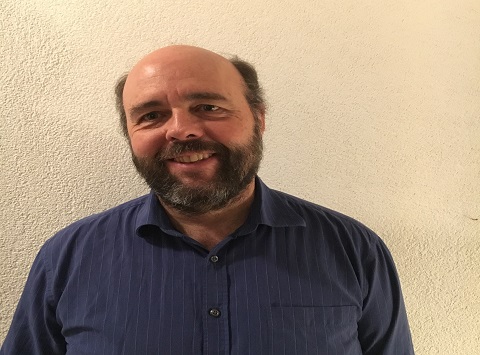
Markus Baenziger
Novartis Pharma AG, Switzerland
Markus Baenziger has more than 25 years’ experience as industrial chemist in the Chemical, Analytical Development of Sandoz, and later Novartis in Basel (Switzerland) as lab chemist. He gained experience as process chemist in Pilot plant and Kilo plant during job rotations (six to twelve months). He is author or co-author of 21 peer reviewed scientific journals (orcid.org/0000-0003-1021-1680) and contributor to 8 patents. He had the scientific lead and was project coordinator of CRO’s, custom manufacturer and internal GMP manufacturing on the project LSZ102.
The development of the synthetic process to the selective estrogen receptor degrader (SERD) drug candidate LSZ102 from the medicinal chemistry synthesis to the streamlined large-scale manufacturing route is described. The synthesis of LSZ102 could be significantly improved in regard to overall yield, removal of all chromatographic purifications, and reduction in the number of steps by revisiting the original disconnection strategy. Key features of the final process include construction of the benzothiophene core via Higa cyclization, late-stage phenolation using a Pd-catalyzed hydroxylation of an aryl bromide, and endgame assembly through a Pd-catalyzed C−H activation step. The overall yield could be significantly improved, and the costs could be reduced.
Speaker

Ahmed Abdala
Department of Chemical Engineering, Doha, Qatar
Dr. Abdala is an associate professor at Chemical Engineering Program, Texas A&M University at Qatar. His research focuses on the development of advanced materials for energy and environmental applications based on polymers and nanomaterials, including functional nanocomposites, functionalized nanomaterials, anticorrosion coatings, polymeric membranes for gas separation and water treatment, and nanohybrids of metal/metal oxides and 2D carbon nanomaterials for catalysis, adsorption, energy storage, and thermoelectric materials. He published 81 peer-reviewed journal articles (H-index=35, total citations=14400) and granted 7 US patents. He is the recipient of the Distinguished Researcher Award from the Indian Association of Solid-State Chemists & Allied Scientists (ISCAS) in 2019, the Qatar Excellence in Innovation Award from Thomson Reuters in 2016, and the Science Lantern Faculty Award from Abu Dhabi National Oil Company (ADNOC) in 2014.
The global shift towards sustainable energy alternatives has triggered the need for efficient and effective energy storage systems. Phase change materials (PCMs) have gained traction among researchers as a possible solution to the intermittent energy supply of renewable sources like solar and wind energy. However, PCM's low thermal conductivity has marred their prospects as an optimum energy storage medium. Consequently, researchers are investigating enhancing the thermal conductivity of PCMs to enable their practical applications. The most promising strategy is incorporating thermally conductive nanofillers into PCMs to prepare thermally enhanced PCM composites. Graphene-based fillers have been the popular choice, but recently boron-nitride has also emerged as a promising candidate. This talk aims to provide a holistic introduction to the field, highlighting the recent significant contributions and addressing the challenges encountered so far. Furthermore, a figure-of-merit (FOM) approach to assess the PCM composites' performance is delineated.
Speaker

Debashree Chakraborty
National Institute of Technology Karnataka, India
Dr. Debashree Chakraborty obtained her Ph.D. from the Indian Institute of Technology Kanpur in 2011. She has done her postdoctorate from the University of British Columbia, Vancouver Canada (2011-2013) and Institut de Biologie Physico-Chimique, Paris, France (2013-2015). Subsequently, she joined the National Institute of Technology Karnataka as Assistant Professor in 2015. Her main interest is in biophysics and protein dynamics. She worked in a variety of fields from voids in the liquids, spectral dynamics of hydrogen-bonded liquids, interfaces, nucleation of crystals to the stability of proteins, drug discovery.
Water is a unique and most important liquid present on earth to sustain life. One of its unique property is the presence of the hydrogen bonds. Water can be considered as a "mixture" of two or more binding states giving rise to different density regions in the fluid and consequently different hydrogen bond pattern. Many anomalous properties of water which make it so unique liquid can be explained on the basis of these coexistence of two phases. Experimentally, the signature of these different phases of water has been seen in the neutron scattering experiments, tetra Hertz spectroscopy, pump-probe spectroscopy. The population of these two density of states namely High density water and low density water can be varied based on the model potential of a system, temperature and also by the presence of ions and biomolecules. In the talk, the variation of high density and low density water at different environment and their correlation with the dynamic properties will be discussed.
Speaker
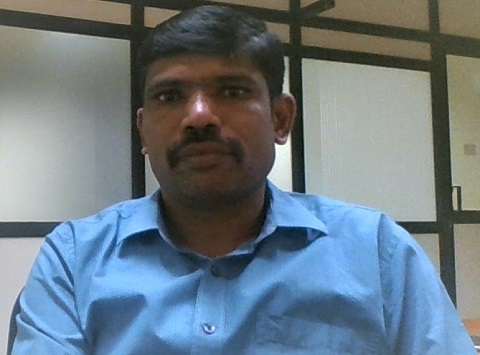
Rajendar Goreti
Indian Institute of Science Education and Research, Thiruvanthapuram, India
Dr. Rajendar Goreti obtained his Ph.D. from the Indian Institute of Chemical Technology, Hyderabad, India in 2012. He did his Post-Doctoral Research Associate in the Harvard University (July 2012 - March 2016). Since April 2016 he is working as Assistant Professor in School of Chemistry, IISER-Trivandrum. His main interest are Asymmetric Total Synthesis of Natural Products and Natural Product Analogues. He got early career research award in 2016 from govt of India.
Chiral auxiliaries are important structural motifs to use in asymmetric synthesis. Several auxiliaries known for their application in asymmetric aldol reactions to provide controlled diastereoselectivity. When it comes to aldol reaction of α-unsubstituted enolates many reported auxiliaries provide unsatisfactory stereoselectivity. Especially aldol reactions of highly enolizable aldehydes is very challenging. We had designed and prepared a new bicyclic imidazolidinone starting from proline and used as chiral auxiliary in acetate aldol reaction. Our new auxiliary provided excellent diastereoselectivities with various aldehydes that include highly enolizable phenylacetaldehyde derivative. The auxiliary assisted aldol reaction was used in the total synthesis of citreochlorols, which aromatic polyketides possessing geminal dichlomethide functional group. The absolute stereochemistry of methoxyl citreochlorols was confirmed based NMR spectral studies and X-ray analysis and revised the reported structures accordingly.
Speaker
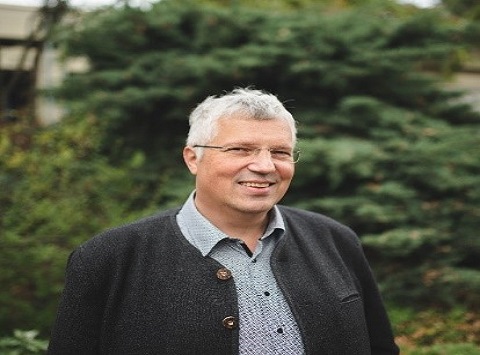
Thomas J. J. Müller
Heinrich-Heine-Universität Düsseldorf, Germany
Prof. Thomas J. J. Müller studied chemistry at Ludwig-Maximilians-Universität München (LMU) from 1984 to 1989, obtained his diploma in 1989 and completed his Ph. D. in 1992. After a post-doctoral stay with Prof. B. M. Trost at Stanford University in 1993/1994, he returned to Germany. From 1994-1999 he developed his independent research at Technical University Darmstadt and LMU as a Liebig and DFG scholar. After his habilitation in 2000 and a short time as a lecturer at LMU he was an associate professor of organic chemistry at Ruprecht-Karls-Universität Heidelberg from 2002 to 2006. Since 2006 he is a full professor and director of insitute at Heinrich-Heine-Universität Düsseldorf. Since 2019 he is the spokesman of the DFG-funded Research Training Group 2482. His research interests encompass synthetic heterocyclic chemistry, functional chromophores, and the design of novel multi-component and domino reactions. He is an author of more than 300 journal articles and book chapters.
Two types of psoralen systems with extended p-conjugation in 5- and 5,8-positions are conceptualized and synthesized by various cross-coupling methodologies, such as Suzuki, Sonogashira and Heck reaction. In particular, in the latter case, i.e. the 5-acceptor-8-donor-substituted psoralene cruciform topologies are accessed by site-selective Suzuki-Suzuki and Sonogashira-Sonogashira multicomponent reactions. Compared to previously synthesized psoralens, thereby promising daylight absorbing compounds as potentially active agents against certain skin diseases can be readily accessed. Experimentally (applying the Lippert-Mataga model) and computationally (TD-DFT calculations), the pronounced charge transfer character of longest wavelength absorption band can be confirmed. Donor-substituted psoralens exhibit remarkable photophysical properties, such as high fluorescence quantum yields and pronounced emission solvatochromicity and acidochromicity. The synthetic and methodological strategy as well as the electronic properties and electronic structure will be presented and discussed.
Speaker
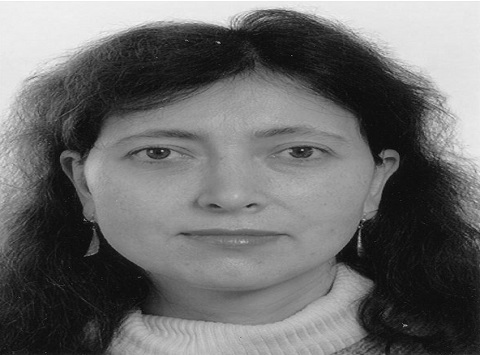
Diana Tranca
Shanghai Jiao Tong University, China
Dr. Diana Tranca did her Master in Physics at the Free University Berlin and she obtained her PhD from Max-Planck for Biophysical Chemistry, Göttingen, Germany. After her PhD, she was working as a theo- retical chemist at different prestigious university in Europe or in the United States like : Berkley University, California, United States, Sorbone University, Paris, France or Technical University in Ham- burg and also in Dresden. Her main interest lies in computational researcher with interest and extended experience in studying porous materials, electro/photo-catalytic processes and surface functionalization, research towards a systematic and rational design of materials for energy applications. She gained practical experience in multi-scale modelling approach, supporting experimentalists in elucidating reaction mechanisms, rate limiting steps, thermodynamics. Experience also in com- putation of other experimentally relevant quantities like: IR spectrum, STM images, UPS spec- tra, work functions, etc. Her experience includes also in teaching and mentoring Master and PhD students.
Hydrogen Evolution Reaction (HER) mechanism on Ru(101)/Graphene has been investigated both experimentally and theoretically.
A RuMo nanoalloy-embedded two-dimensional porous carbon nanosheets (2DPC-RuMo) as an efficient catalyst for HER was prepared by a combination of hard-templating synthesis and anion-exchanging process. In this talk will be shown that the unique structures of 2DPC-RuMo, obtained by alloying Mo atoms into Ru lattices lead to excellent electrocatalytic HER activity with extremely low overpotential (18 mV at 10 mA cm−2) (1 M KOH), an ultrasmall Tafel slope (25 mV dec−1), and a high turnover frequency (TOF) (3.57 H2 s−1 at 50 mV), outperforming state-of-the-art Ru-based electrocatalysts and commercial Pt/C catalysts.
For understanding better the experimental results, DFT simulations were performed in orderto investigate the HER mechanism, by constructing different types of defects through doping with N and Mo atoms. The substitutions of C and Ru atoms through N and Mo atoms, respectively, have been shown to boost the HER activity in alkaline media. From the results of free energy calculation, it is obtainedthat the upper energies for one of our structures - P4N@MoRu(101) -were approximately 0.05 and 0.01 eV, while the lower energy value was approximately -0.6 eV, indicating that this type of performance is competitive to that of the Pt surface.
We can conclude that our work not only provides a convenient methodology towards metal- carbon heterostructures synthesis, but also paves the way to develop novel hybrid nanomaterials targeting high performance catalytic reactions.
Speaker

Takashi Tsukamoto
Johns Hopkins University, United States
Takashi Tsukamoto is Associate Professor of Neurology at Johns Hopkins University and the Director of Medicinal Chemistry at Johns Hopkins Drug Discovery. He received his Ph.D. in Chemistry from the Tokyo Institute of Technology and pursued his postdoctoral studies at the University of Michigan. Prior to joining Johns Hopkins in 2009, Dr. Tsukamoto has held a variety of research positions in the pharmaceutical industry. During the course of his career, he has served as a lead medicinal chemist in a number of drug discovery projects, exploring new therapeutics for neurological disorders and cancer. He is the lead inventor of the cytidine deaminase inhibitor cedazuridine and its combination with decitabine, which received FDA approval as Inqovi in 2020.
Drug screening technology has made a substantial improvement over the past few decades and enabled the processing of a greater number of compounds in a shorter period of time. In order to keep up with this fast-paced screening paradigm, medicinal chemists shifted their focus toward synthetic routes that produce a large number of analogs by incorporating a variety of fragments in fewer steps. How has this change impacted what kind of molecules medicinal chemist choose to make? This presentation will highlight the unintended consequences seen in molecules made by medicinal chemists nowadays as a result of the current practice and attempt to propose how we can get ourselves back on the right track.
Keynote
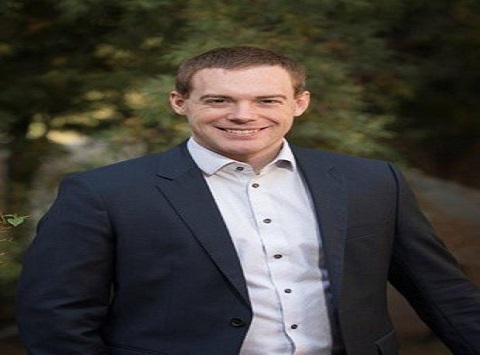
Scott Cushing
California Institute of Technology, USA
Scott Cushing is an Assistant Professor at Caltech with a multidisciplinary background spanning Chemistry, Materials Science, and Physics. His research focuses on the creation of new scientific instrumentation that can translate quantum phenomena to practical devices and applications. Scott has been awarded DOE, AFOSR, Rose Hill, and ACS related Early Career awards. The Cushing lab is currently pioneering the use of high-flux, compact sources of entangled photons for microscopy and spectroscopy, as well as exploring attosecond x-ray and time resolved EELS approaches. Scott holds multiple patents, some of which led to a solar energy company.
Femtosecond to picosecond processes are often considered to be a thermalizing bath that has little effect on longer time scale photocatalytic reactions. In this talk, we will discuss when strong electron-phonon interactions can be the rate limiting step in photocatalytic materials and junctions. Specifically, high harmonic generation is used to create X-ray pulses with attosecond pulse widths and energies covering 10-150 eV. The energy range allows for multiple elemental X-ray edges to be measured simultaneously. The XUV pulse is combined with a 3-5 femtosecond excitation pulse and a delay line to allow for transient absorption measurements. The response of the elemental X-ray edges to visible light photoexcitation is separated into electronic and thermal structural components using the Bethe-Salpeter equation with density functional theory. This allows for the heat and charge transfer to be measured as a function of an element. For example, the conversion of photoexcited electrons to polarons is measured in Fe2O3. The time-resolved energy of electrons and holes, as well as their correlation with the acoustic and optical phonon bath, is measured in Si and Ge. Finally, the charge and heat transport is measured between each component of a metal-insulator-semiconductor junction (Ni-TiO2-Si) using the Ni, Ti, and Si X-ray edges.
Keynote

B. Frank Gupton
Virginia Commonwealth University, United States
Dr. Frank Gupton is a professor at Virginia Commonwealth University and holds joint appointments in the Departments of Chemistry and the Department of Chemical and Life Science Engineering. He is the Floyd D. Gottwald Chair of Pharmaceutical Engineering and also serves as Department Chair of the Chemical and Life Science Engineering Department. His thirty-year industrial career centered on the development and commercialization of chemical processes for pharmaceutical applications. Dr. Gupton’s research group is currently focused on the development of continuous processing technology to facilitate the discovery, development and commercialization of drug products. Prior to joining the faculty at Virginia Commonwealth University, Dr. Gupton served as the Executive Director of North American Process Development for Boehringer Ingelheim Pharmaceuticals and led the commercialization of the widely prescribed HIV drug nevirapine. Dr. Gupton received his Bachelor of Science degree in chemistry from the University of Richmond and graduate degrees in organic chemistry from Georgia Tech and Virginia Commonwealth University.
Dr. Gupton’s research efforts have focused on streamlining pharmaceutical processes, particularly in the area of active ingredients, by employing the principles of process intensification which include the use of innovative chemistry, novel continuous manufacturing platforms, and new and more efficient catalysts for pharmaceutical applications. The research group’s efforts are guided and driven based on both financial and economic impact that can be derived from this effort. Dr. Gupton is the recipient of the 2018 American Chemical Society Award for Affordable Green Chemistry, and in the same year, he received the Presidential Award for Green Chemistry. In 2019 he received the Peter J. Dunn Award for Green Chemistry and Engineering Impact in the Pharmaceutical Industry from the ACS Green Chemistry Institute Pharmaceutical Round Table. These awards were associated with Professor Gupton’s work on the development of a highly efficient process to produce nevirapine, a first-line treatment in HIV therapy.
Access to global public healthcare is impacted by many technical, economic, and social factors. It is widely recognized that the resources required to deliver and improve global public health are currently constrained. A powerful way to increase access is to lower the cost of products and services that have already proven to be effective. Currently, the cost of producing a wide range of pharmaceutical products is higher than it needs to be. The mission of Medicines for All (M4All) is to transform active pharmaceutical ingredient (API) processes in order to reduce medication cost and improve patient access. To fulfil this objective, M4ALL has developed a set of core principles for API process development, which are derived from fundamental elements of process intensification that are commonly known but often neglected. These principles have been applied to several global health drugs yielding dramatic improvements in chemical efficiency. The development of novel and highly efficient heterogeneous catalysts for cross-coupling reactions that support this effort will also be presented.
Speaker
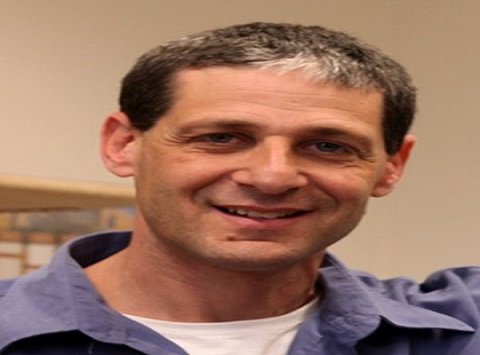
Yossi Paltiel
Hebrew University Jerusalem, Israel
Professor Paltiel is in the Applied Physics Department in the Hebrew University of Jerusalem, Israel. He has worked for both leading high-tech industry groups and in the academic world. Paltiel's group’s goal is to establish a way to incorporate quantum mechanics into room temperature devices. For example, we utilize chiral molecules as spin filters for achieving logic devices. Paltiel is involved in two startup companies; the first is named Valentis Nanotech founded in 2013. The 2nd company is named Kiralis founded in 2018. Kiralis uses magnetic surface interactions to achieve efficient chiral enantiomers separation. 1st place Kaye Innovation Awards winner.
Living organisms rely on chiral molecules, such as nucleic acids and proteins. A chiral molecule is not superimposable on its mirror image, also known as its enantiomer, just like our right hand cannot be superimposed on our left hand. Organisms contain only one enantiomeric form of a molecule, a selectivity that has prevailed through evolution. We claim that the chiral induced spin selectivity (CISS) effect can explain why enantiomeric purity might provide an advantage in biology. CISS is an electronic phenomenon in which electron transmission through chiral molecules depends on the direction of the electron spin, a quantum mechanical property associated with its magnetic moment. Thus charge displacement and transmission in chiral molecules generates a spin-polarized electron distribution. This effect; enhance electron transfer in proteins, enable nano metric charge separation, and explain biorecognition.
From the application point, by utilizing the CISS effect we demonstrated a magnet less spin based nano magnetic optical and electrical memory. The technology has the potential to overcome the limitations of other magnetic-based memory technologies to allow fabricating inexpensive, high-density universal and embedded memory-on-chip devices. Lastly, using magnetic ferromagnetic surfaces we have found simple generic ways to separate between two enantiomers. Achieving enantiopurity is of great importance to many industrial fields. Generally, since chirality exists in only one of the possible enantiomeric drugs having the same chemical composition but opposite chirality may have extremely different biological effects.
In my talk I will present the CISS effect and its impotence, both for applications and basic science. I will show measurements on the short range exchange force that the CISS effect induce. Lastly I will also point to open questions regarding the CISS.
Speaker

Gilliani Peixoto Miranda
National Institute of Technology (INT), Brazil
Gilliani P. Miranda is a chemical engineer and got her M.Sc. degree at the Federal University of Rio de Janeiro (UFRJ), Brazil. She has developed research studies devoted to chemical process transformation, especially the ones concerning sustainable routes (biomass and ethanol), catalytic conversion of CO2 for syngas production, and some others in the heterogeneous catalysis field. Moreover, she has also developed technological studies in partnership with the productive sector, such as the cosmetic and health care segment with multinational companies like L’Oréal. She is currently part of Dr. Fabiana Mendes’s team at the National Institute of Technology (INT) and develops efforts on new oxidation catalysts formulation, using activated carbon obtained from sugar cane straw, applied to the selective oxidation of propane.
Although the oxidative dehydrogenation of propane (ODH) reaction has been studied for decades, technological maturity is still in the R&D phase. In fact, it is a promissor alternative route to propylene, a relevant chemical intermediate commonly produced by petroleum refining. Furthermore, the growing demand for polypropylene on-purpose production brought the scientific efforts up to date, focused to develop more selective and stable catalysts. Among the different types of catalysts active in this reaction, V-based catalysts are the most investigated, both as supported catalysts or as non supported active phase. Aiming to promote high dispersion of VOx species and at the same time, valorize biomass waste, activated carbon derived from sugarcane straw has been studied as catalytic support due to its physicochemical properties, especially its high surface area, and its low cost. Oxidation resistance and thermal stability of the material are promoted by the presence of phosphate linkages, when using phosphorus as activation agent, which are lost with vanadium addition, collapsing the structure under oxidation conditions. Such issue has been solved with magnesium introduction, in VMgO phases form (Mg/V=0.5), which allowed achieving the stability of activated carbon support, as reported in our recently published work. In the present work, different VMgO phases were supported on the activated carbon, with values of Mg/V molar ratio of 0.5, 1 and 1.5, beyond maintaining vanadium content similar to our previous work (13 wt.%). The prepared catalysts were evaluated towards propane ODH reaction and exhibited activity, selectivity to propylene and lasted stable for at least 24h of reaction. The most selective catalysts for propylene formation were those containing lower Mg/V ratio (0.5 and 1) and the Mg2V2O7 phase, reaching selectivity values up to 27% at 420°C. The stability could be achieved due to the presence of surface V-Mg linkages, even with the occurrence of VPO formation.
Keynote
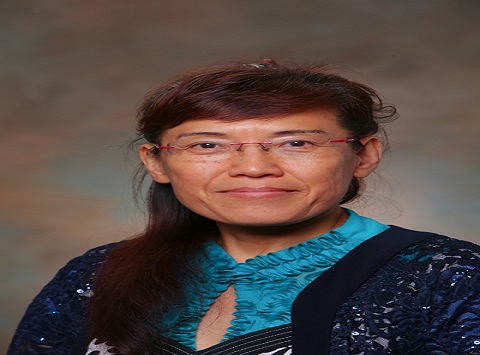
Jingbo Louise Liu
Texas A&M University Energy Institute and TAMU-Kingsville, United States
Professor Jingbo Louise Liu received her Ph.D. in Materials Science and Engineering (with a focus on materials chemistry) from the University of Science and Technology Beijing in 2001 and completed her postdoctoral fellowship in the Department of Chemistry (focus on electrochemistry and alternative energy), the University of Calgary in 2004. She was promoted to a tenured Full Professor at Texas A&M University-Kingsville (TAMU-K) in 2016 and affiliated with the TAMU Energy Institute in 2019. The promotion and affiliation were due to her productivity for nanostructured materials preparation, characterization, understanding of the properties and applications of engineered nanomaterials in alternative energy and biological science. She has been hosting 15+ visiting scholars and taught > 10,500 students; trained > 150 undergraduates and 35 graduate students. She served as the National Science Foundation panelist & chair, journal editor, and also as a reviewer for dozens of journals. Dr. Liu participated in and directed more than 40 sponsored projects, supported by the NSF; R. Welch Foundation; Department of Education; Petroleum Research Fund of American Chemical Society (ACS); and TAMU Energy Institute & TAMU-Kingsville. She published more than 100 journal articles, books, and book chapters. Being a Directed Energy Bio-effects Institute (DEBI) faculty fellow at the US Air Force Research Laboratory, she co-filed 2 patents (more than 20 claims per patent) with Air Force scientists to address clinical prevention and healthcare concerns. Due to her leadership in chemical sciences and engineering, she was awarded the distinction of Chartered Scientist by the Science Council and Chartered Chemist by the Royal Society of Chemistry (RSC). Recently, she was elected as the Fellow of the International Association of Advanced Materials (FIAAM), Fellow of Vebleo (Science Engineering and Technology), and Fellow of RSC, in addition to the Japan Society for the Promotion of Science (JSPS) invitation Fellow and Israel Summer Faculty Fellow
The synthesis, characterization, and application of interactive nanomaterials to improve energy utilization were systematically carried out. The specific aims are three-fold: 1) to synthesize metal oxide-based bioinspired materials to control the oxygen reduction reaction and facilitate electron transfer mechanism; 2) to characterize these materials with a focus on nanostructres; and 3) to assemble into energy generation and storage devices with an aim to determine the current and power density. The chemical vapor deposition, high energy ball-milling, and wet chemistry methods (colloidal, hydrosolvo-thermal, & solid-state chemistries) were applied to produce different formulations of nanomaterials. This approach will enable nanomaterials to operate using biochemical redox-based principles to respond to the external environmental changes and to self- regulate via electron injection and/or O2 detachment. Our research data indicated that material functionalization is one of the key factors to improve the catalytical reactivities of these interactive materials when used as electrocatalysts. The power density and current density of fuel cells were found to be increased by one fold magnitude while device durability was sustained at a 95 % root mean square current modal value at 3,600 cyclic operations. Nanomaterials with high surface area or surface to volume ratio and porosity are the dominant factors that lead to enhanced reactivity. In summary, the conceptual innovation of this research lies in applying molecular mechanics and dynamic techniques to improve energy utilization. The methodological innovation includes cost- effective and up-scalable methods to prepare interactive materials to respond to the environmental changes and data-driven fine-tuning of their nanostructures.
Speaker
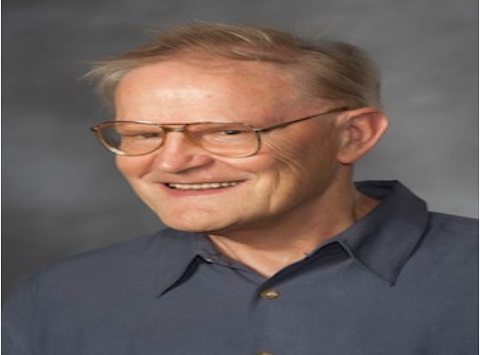
Dusan Bratko
Virginia Commonwealth University, United States
Dr. Dusan Bratko obtained Ph.D. in Physical Chemistry from the University of Ljubljana and is currently a Professor of Physical Chemistry at the Virginia Commonwealth University. He previously held positions at the Department of Chemistry, University of Ljubljana, and in the Department of Chemical Engineering, University of California at Berkeley. His research concerns statistical mechanics and molecular modeling of ionic solutions, colloids and interfacial phenomena of interest in nanoscience, energy, and materials engineering.
Compression of liquids in liophobic pores presents a viable mechanism for the conversion of mechanical work to interfacial free energy as a new form of energy storage. Reducing the hysteresis of the influx/expulsion cycle is imperative for energy recovery. Using molecular modeling, we show replacing water by concentrated electrolyte solution rises the evacuation pressure more than doubling the amount of the recovered work. We use aqueous NaCl of varied bulk concentrations permeating 1-2 nm wide pores at pressures of up to 3 kbar. Open ensemble Monte Carlo simulations with incremental changes of ion coupling are employed using experimental chemical potentials of bulk phases under pressure. The simulations provide a theoretical perspective into the mechanisms behind the improved reversibility of the process due to increased wall/solution interfacial free energy in narrower pores and concomitant infiltration and expulsion pressures. These changes are consistent with strong desalination of the solution detected in narrow confinements at all pressures and bulk concentrations. Liquid spring behavior is indicated in highly soluble salts like LiCl and in sub nanometer pores.